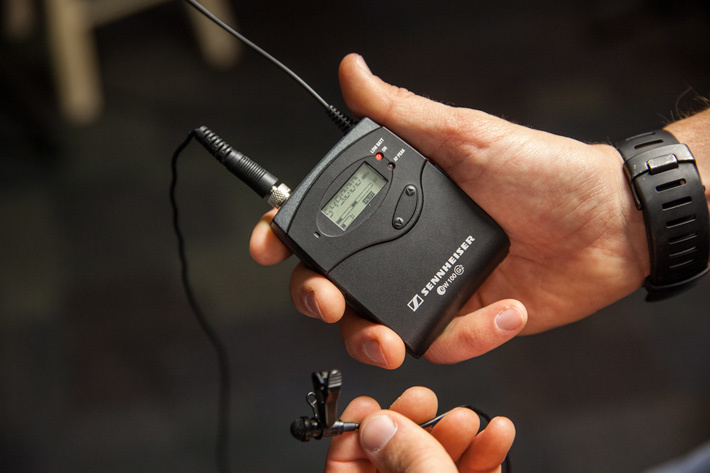A few weeks ago I shared some insight on using shotgun microphones for documentary style interview productions. This week, I’ve got a companion video that explores techniques for using lavalier mics, the standard go-to mic for most interview scenarios.
Lavaliers are small (some are really tiny!) microphones that are most often clipped to a persons clothes and used to record their individual dialogue. Basic stock mics are included in wireless kits, but they can be purchased just as the mic itself, ending in XLR or 3.5mm mini plugs.
Pickup Patterns
While many lav mics are omnidirectional, meaning they capture an equally strong signal from all directions, there are quite a few lav mics that are made with a cardioid or hypercardioid pattern. This becomes important when clipping a microphone, so that you know which style you own, because you’ll need to point the end of the microphone in the direction of your talents mouth if you have anything but an omnidirectional mic. Too often I see camera operators clipping a mic onto someone that is pointed away from their mouth, and the cam op doesn’t know the pickup pattern of the lav they are using.
Mic Placement
While with shotgun mics it is desirable to close-mic your speaker, with a lavalier you should start by placing it about six to eight inches away from the source of audio (the speakers mouth). This often means clipping the mic onto the neckline of a shirt or edge of a jacket. Clipping the lav too close to the persons neck will capture a much deeper, guttural sound to their voice which usually isn’t desirable.
Standalone Recorders
For DSLR shooters, your camera might not have the inputs needed to accept an audio in signal, so you’ll like be using a “second system sound” method to record your audio. Recorders like the Zoom H1 and H6, as well as the Tascam DR-40 are good options.
Wireless Kits?
A wireless transmitter and receiver are a mainstay in most documentary production kits, and for good reason. They are convenient, usually reliable, and get the job done. The Sennheiser G3 series is a good choice if you’re looking to buy a system.

A wired lavalier can be a bit cheaper, and in some situations might be more reliable. Many times I’ve been checking audio for an interview that we have set up, only to find that we are getting some unwanted interference in the wireless signal. Changing the frequency helps sometimes, but not always. Dropouts while recording are simply unacceptable, so if you can't get a clean signal, a wired lav could be the way to go.
Using Both Lavs and Shotguns
As I noted in my previous article, I’ll set up both shotgun and lav mics whenever possible. If I’m using a wireless lav system and there is a dropout in the middle of some dialogue, my shotgun will have saved me! I can simply cut in that section of audio during the edit to fill in the gap, or just use the shotgun audio for the entirety (Depending on your mix, you might have to add some room tone to make it sound smooth).
Check out the e-book, Tips for Shooting Professional Video Interviews, to learn more about recording audio on interview video productions, as well as topics like lighting, framing, asking interview questions, and more.




Good tips, thanks for sharing. I recently used the Rode Link wireless lav kit on a two-week documentary shoot and was really impressed at how good it sounded/ease of use. The packs weren't quite as small, but for the massive price difference, I will be going with Rode.
Thanks for sharing, I've been hearing lots of good things about the Rode Link kits lately, but haven't been able to use them yet.
I once used a 'match head" sized Countryman Associates micro lav with "vampire" clips to record the president of a company. Did a great job of giving him a "vampire bite" while setting it up on him. :-) When it was all properly set up however (inside of the shirt collar flap), the pickup and rejection was fantastic.